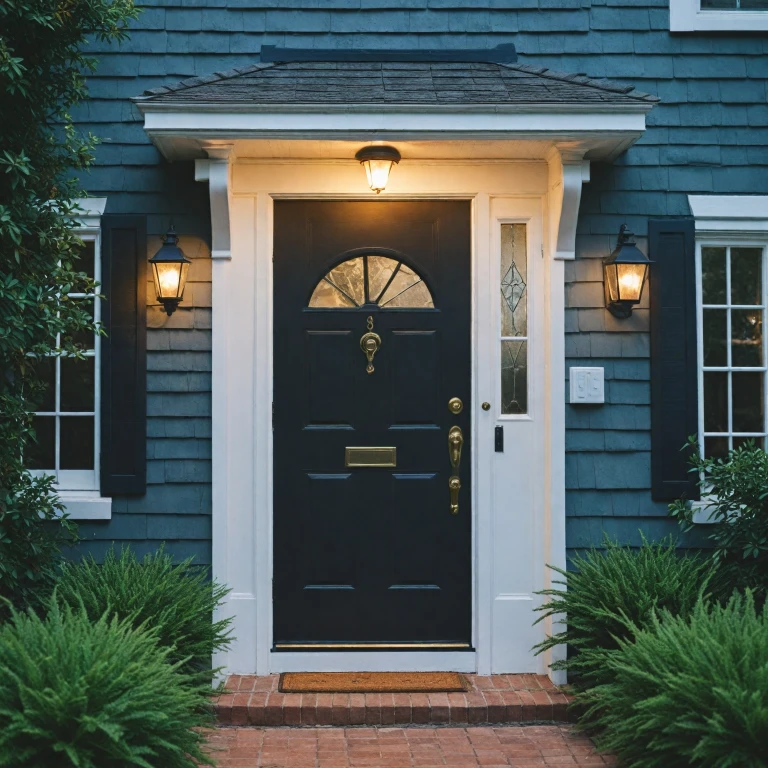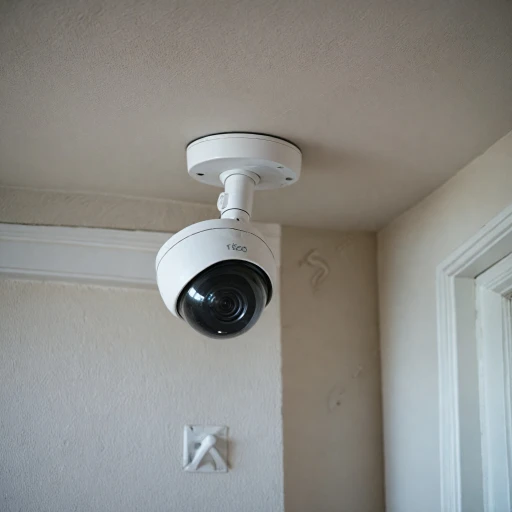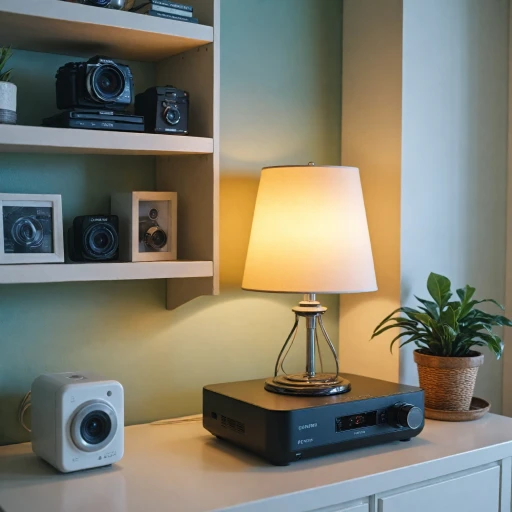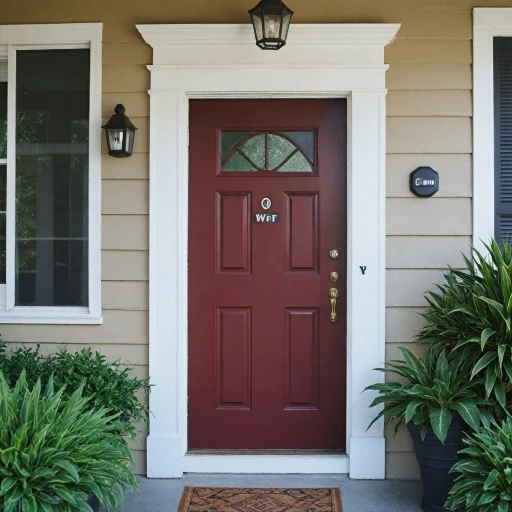Choosing the Right Ring Doorbell for Your Home
Determining the Best Fit for Your Entryway
When setting up a ring doorbell for your home, selecting the right model is essential to ensure seamless integration with your existing setup. To make an informed choice, consider the following factors:
- Power Source: Decide whether a wired doorbell or a battery doorbell best suits your needs. A wired doorbell connects to your existing doorbell wires, providing continuous power, while a battery doorbell offers flexibility and ease of install without the need for wiring, making it ideal for those hesitant about handling wires or drilling.
- Location: Assess where you intend to mount the device. Some models require a mounting bracket that affixes directly to your wall, often involving the use of mounting screws and potentially drilling pilot holes if not using existing holes.
- Features: Consider the features you desire. Video quality, motion detection, and compatibility with existing systems like chime units or a ring alarm can influence your decision.
- Screw and Anchor Compatibility: Ensure your choice includes compatible screws and wall anchors to secure the mounting bracket.
Choosing the right ring doorbell isn't just about picking a fancy gadget but ensuring it aligns with your home's specifics and personal preferences. Whether you're adorning a historic estate or a modern apartment, an optimal blend of technicality and practicality should guide your selection.
Once you've chosen your preferred ring device, be ready to gather the necessary items you'll need for its setup, and consider how you plan to integrate it with other devices, as covered in the further sections of this guide.
For more insights into enhancing your setup, you might find enhancing your router a valuable read, as connectivity can significantly affect performance.
Gathering the Necessary Tools and Equipment
Preparing Your Toolkit for Installation
Before diving into the installation of your Ring doorbell, compiling all required tools and equipment ensures a seamless process. This preparation can save you from running around midway, simplifying the time you spend at this task.- Doorbell and Setup Tools: Depending on whether you opted for a battery doorbell or a wired version, the installation tools will slightly adjust. Don't worry, most products come with an included screws bag, mounting bracket, and other essentials.
- Power Drill: A drill will be your best friend when creating the pilot holes required for installation. Ensure you have the right bit for the mounting screws and wall anchors.
- Screwdriver: Essential for securing screws and security screws, especially for doorbell wired installations where connecting the doorbell wires to your existing system is needed.
- Level: Make sure your video doorbell is installed evenly on the wall or directly wall mounted; an unlevel device could impact the video quality of your recordings.
Your Equipment for Success
Besides the tools, identify the setup type you're preparing for: a fresh installation or using the existing doorbell system. Adapting accordingly will make installation a breeze.- Ring Device and App: Ensure your ring device is properly charged or connected to power. Have the ring app ready for the subsequent configuration.
- Mounting Bracket: Double-check your mounting bracket fits the desired installation spot, and all required holes align with the wall or surface.
- Chime and Existing Power: If integrating with an existing doorbell chime, verify its compatibility with the new ring device and if additional power is required.
- Installation Space: Whether on the wall or door frame, confirm there's enough space for the doorbell ring to fit securely without obstruction.
Step-by-Step Installation Process
Getting Your Ring Video Doorbell in Place
Installing your Ring video doorbell can seem daunting, but it doesn't have to be. Follow these straightforward steps to ensure a smooth setup process.
First, confirm that you have all the necessary components and tools readily available. This should include the Ring device itself, mounting bracket, screws bag with security screws, wall anchors, and the essential tools such as a drill, screwdriver, and right bit size for pilot holes.
Begin by selecting your desired location for the doorbell. If you are replacing an existing doorbell, assess the condition of the existing doorbell wires for compatibility with your new Ring device. For a wired doorbell, make sure there is adequate power supply. If you are opting for a battery doorbell, ensure the battery is fully charged before installation.
Securing the Mounting Bracket
Once you've chosen the location, it’s time to install the mounting bracket on your wall. Identify the suitable height to ensure optimal coverage of the area, typically eye level is best. Use the mounting bracket to mark the spots for the holes on the wall.
For a wired setup, ensure the doorbell wires are threaded through the bracket before securing. Use your drill to create pilot holes in your selected spots. Next, use the included screws or wall anchors (for a more secure hold if installing directly onto a wall without existing holes) to attach the bracket firmly.
In case of a non-wired installation, this step is unnecessary, focusing instead on the stability to ensure the battery can be easily accessed for charging when needed.
Attaching the Doorbell and Final Checks
With the bracket in place, attach your Ring device to the mount. If it's a video doorbell, connect the wires to the terminal screws as outlined in the Ring app. Secure the doorbell onto the mounting bracket using the security screws provided for added security.
After attaching, test the chime feature and video feed using the app to confirm your doorbell ring is functional. Be sure to check out this guide on choosing the right home security camera to explore other security options compatible with your Ring system.
Configuring Your Ring Doorbell Settings
Fine-Tuning Your Ring Doorbell for Optimal Performance
Once the physical installation of your ring doorbell is complete, it’s essential to configure the settings for the best performance and security. Here’s a straightforward guide to help you set up your device settings using the Ring app.- Power Source Configuration: Depending on whether you chose a battery-operated or wired connection, ensure the power configurations are set accordingly. If you’ve opted for a wired option, verify the doorbell is powered through the existing doorbell wires. For battery doorbells, make sure the battery is fully charged and securely positioned.
- Ring App Navigation: Open the Ring app on your smartphone, which should have been installed during the initial setup. The app acts as the central control hub for all your Ring devices, allowing real-time video feed, motion alerts, and customization of settings.
- Adjusting Motion Settings: You can customize motion detection by setting up specific zones. This allows you to focus on areas you think are more crucial, minimizing unnecessary alerts. Also, adjust the sensitivity levels to ensure you’re not receiving alerts for insignificant movements.
- Video Settings Customization: Navigate through the app to modify video settings, such as video quality and recording length. Higher video quality might require more bandwidth, so balance the quality based on your internet capability.
- Chime and Notifications: Enable the chime for immediate notification of visitors. Customize the type of sounds or alerts that suit your preference. Notifications are pivotal in not just welcoming friends but also in improving security.
- Security Enhancements: Secure the video doorbell with the provided security screws included in the screws bag, including the mounting bracket and directly wall attachments when using wall anchors. This prevents unauthorized removals.
- Integration with Other Devices: Lastly, if you have additional smart home devices, it's beneficial to integrate them with your setup. This facilitates a seamless smart home experience, allowing for synchronized automation that can enhance security and convenience.
Integrating with Other Smart Home Devices
Enhancing Your Smart Home Ecosystem
Integrating your ring video doorbell with other smart home devices can streamline your security ecosystem and elevate your peace of mind. By connecting your ring device, you can ensure a seamless flow of information and control across various gadgets.- Syncing with Smart Assistants: Many users pair their ring doorbell with popular smart assistants such as Amazon Alexa or Google Assistant. This integration allows you to issue voice commands to see who’s at your door or receive instant notifications on your devices.
- Connecting to Smart Displays: If you have smart displays installed in your home, you can easily check your ring video feed. Accessing the video becomes as simple as asking your assistant to show the footage, ensuring you never miss an important visitor.
- Home Automation Routines: Incorporate your ring doorbell into existing home automation routines. For instance, you can set a rule to turn on the front porch lights when motion is detected by the ring device, enhancing security during nighttime.
- Linking with Security Systems: If you have a comprehensive security system, integrating your doorbell can add an extra layer of protection. Many systems allow you to trigger alarms or record video clips when specific conditions, such as detected motion or someone ringing the bell, are met.
- Explore Additional Features: The ring app serves as the hub for managing your integrations. Dive into the settings of the app to discover other devices that can connect with your ring doorbell, ensuring a tailored fit for your home's unique needs.
Troubleshooting Common Installation Issues
Addressing Installation Hiccups
Installing your ring video doorbell can sometimes come with its own set of challenges. Let's dive into common issues you might encounter and practical solutions to ensure a smooth setup.
1. Power Supply Problems
If your wired doorbell is not receiving power, first check that the device's wired connections are secure. If the existing doorbell wires are loose or damaged, they may need replacement. When powering the ring doorbell with a battery, ensure it’s fully charged before installing. It’s always crucial to test the ring device after installation to confirm it receives adequate power.
2. Connectivity Issues
The ring app guides you through connecting your video doorbell to your Wi-Fi network. If the connection fails, verify that the Wi-Fi details are correct and the router is within range. Sometimes, interference or an incorrect password may be the culprit. Rebooting your router and ensuring no obstructions between the device and the router can significantly improve connectivity.
3. Wall Mounting Challenges
When mounting directly to a wall, make sure to use the appropriate mounting bracket, wall anchors, and screws supplied in the screws bag. If you encounter difficulty drilling pilot holes, checking the drill bit size and the material of the wall can help. Overcome these obstacles by securely mounting the bracket using the included mounting screws.
4. Video Quality Concerns
Ensure that the camera lens is clean and unobstructed. For optimal video performance, position your doorbell at chest height and tilt it slightly towards the visitor's approach path. Regularly update the ring app to access the latest performance enhancements and settings optimization.
5. Chime Integration Troubles
If your ring alarm isn’t working with the existing chime, recheck the connection between the doorbell wires and the chime. Compatibility issues can arise if the chime is not supported. Refer to the manufacturer's instructions for specific guidance or consider a battery doorbell alternative.
To ensure the best installation experience, review the earlier steps on gathering necessary tools and following the detailed installation process. With these tips, you’ll enhance the security and utility of your ring device efficiently.




